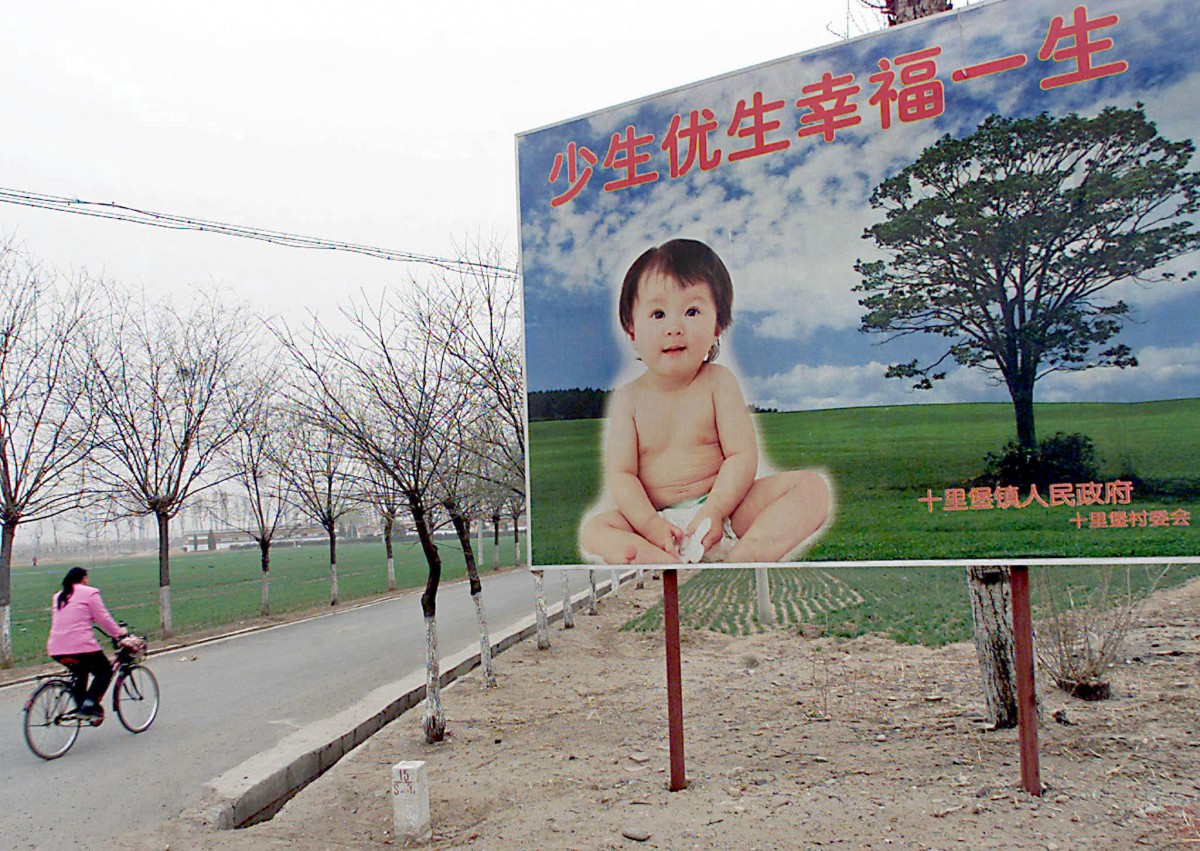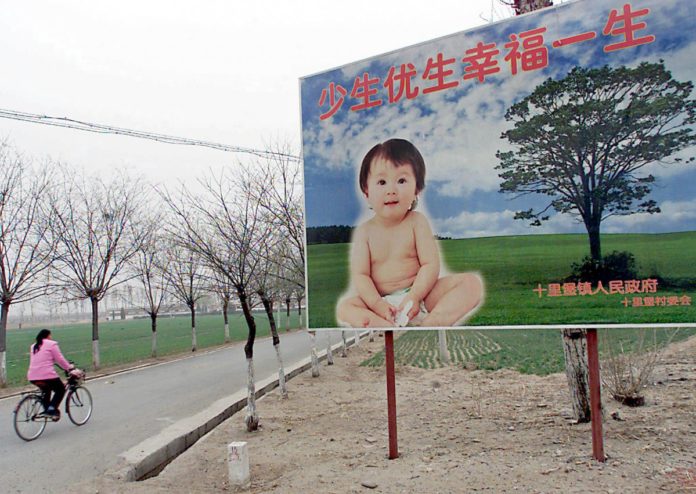AFTER a government-issued stamp depicting a family with three children was released last week, speculation has been rife that China may finally be putting an end to its infamous attempts at population control.
Suffering a booming population and diminishing resources in the 70s, the communist party implemented the one-child policy that proved incredibly effective in lowering birth rates. It was so effective, in fact, that the country is now facing the opposite problem of a rapidly aging population and a shrinking workforce.
They’re now trying to back-peddle and are considering cash handouts and tax breaks to couples willing to procreate.
SEE ALSO: Maybe China just doesn’t want any more kids
China is far from the only government that’s wormed its way into people’s bedrooms. Whether they’re trying to stop it or encourage it, governments across the world have found ways to make your business, their business.
Here are some of the most extreme, effective, and just downright weird attempts at population control.
China
Let’s start with probably the most famous example of population control – China.
The communist party’s overzealous enforcement of its one-child policy has been a point of contention for many human rights groups since its inception in 1979.
The stringent policing of the policy saw women subjected to regular gynaecological examinations, forced abortions, and in some instances, surgical sterilisation.
Family’s are also fined if they violate the policy. While rich couples are able to bear the cost, poor couples suffer.

A woman cycles past a billboard encouraging couples to have only one child, along a road leading to a village in the suburb of the Chinese capital Beijing. 25 March 2001. Source: AFP/Goh Chai Hin
In 2014, Wang Guangrong, a 37-year-old father of four, killed himself after he was told his children could not enrol in the local public primary school unless he paid heavy fines of RMB22,500 (US$3,275) for violating the policies.
The communist party eased the restrictions in 2015 when it allowed couples to have two children – but no more.
It now looks like the scheme might be scrapped completely as China hopes to address social and economic problems created by the strict family-planning policies. A shrinking working-age population could threaten its economic development and a huge gender imbalance has made it hard for many men to get married.
India
India is experiencing similar problems to those China went through during the 70s and 80s. Its population is booming, and the sheer size poses looming pressures on resources and presents an enormous challenge for the government to expand schooling and other services for the growing young population.
Population control has largely been left to state governments to decide on the policies. While some states have reacted with coercion, forbidding parents with more than two children from holding local office or disqualifying government workers from certain benefits if they have larger families, other states have done little.
Maharashtra state offers newlyweds a cash grant of 5,000 rupees (US$72) to wait two years to have their first child.
SEE ALSO: China: Considering birth rewards and subsidies for second child
Singapore
The little Southeast Asian city-state wins the award for the weirdest approach to baby making.
Rather than trying to curtail population growth, Singapore is trying to encourage it.
With one of the lowest birth rates in the world at just 1.2 births per woman, the total fertility rate has been below replacement levels for over 40 years. And the government has been trying some unusual methods to pick up the pace.
In 2012, they teamed up with Mentos mints to release a song urging people to do their national duty and get down on national day.
Some of the lyrics include: “It’s national night and I want a baby, boo. I know you want it, so does the SDU (Social Development Unit). I ain’t merlion baby, this is national duty. Let me SMS the details of our late night dooty… call. Singapore’s population, it needs some increasing. So forget waving flags, August 9th we be freaking.”
The country has also placed a limit on the number of small one-bedroom apartments available for rent to encourage people to live together and, presumably, procreate.
Each year the government spends roughly US$1.6 billion on programmes to get people to have more sex.
South Korea
Family planning policies of the 60s and 70s were so effective in slowing population growth that South Korea now has one of the lowest birth rates in the world.
Last year it recorded its lowest ever fertility rate at just 1.05 births per woman. To keep its population level stable, the country needs a fertility rate of 2.1 births per woman.
SEE ALSO: China may end child limits by end of 2018
It is now the fastest aging developed economy in the world with over-65s outnumbering young people. In December, the country recorded more deaths than births for the first time ever.
In an attempt to restore the balance, the government has poured US$70 billion into incentivising child birth over the last decade.
Expectant couples are given 500,000 won bonuses (US$440) to help cover prenatal expenses. For the child’s first year, parents get monthly cash allowances of up to 200,000 won (US$176) – an amount that increases with each subsequent child.
They also set up a universal free childcare policy in 2013 to reduce the financial burden of having a child.
Other perks include subsidised fertility treatments, housing assistance and even free parking and dinner discounts.





